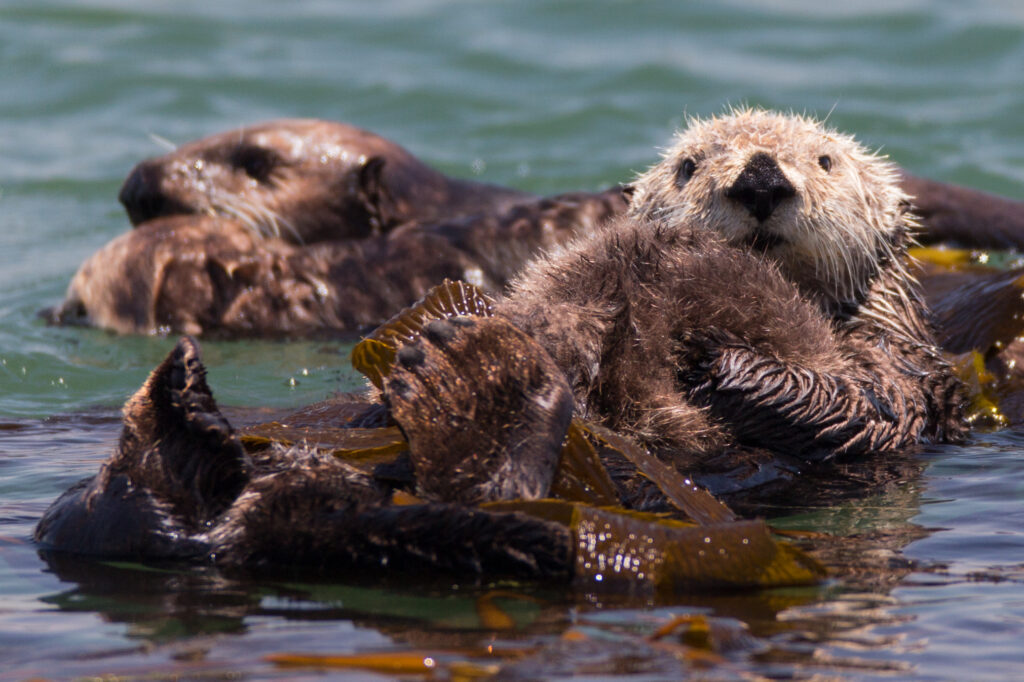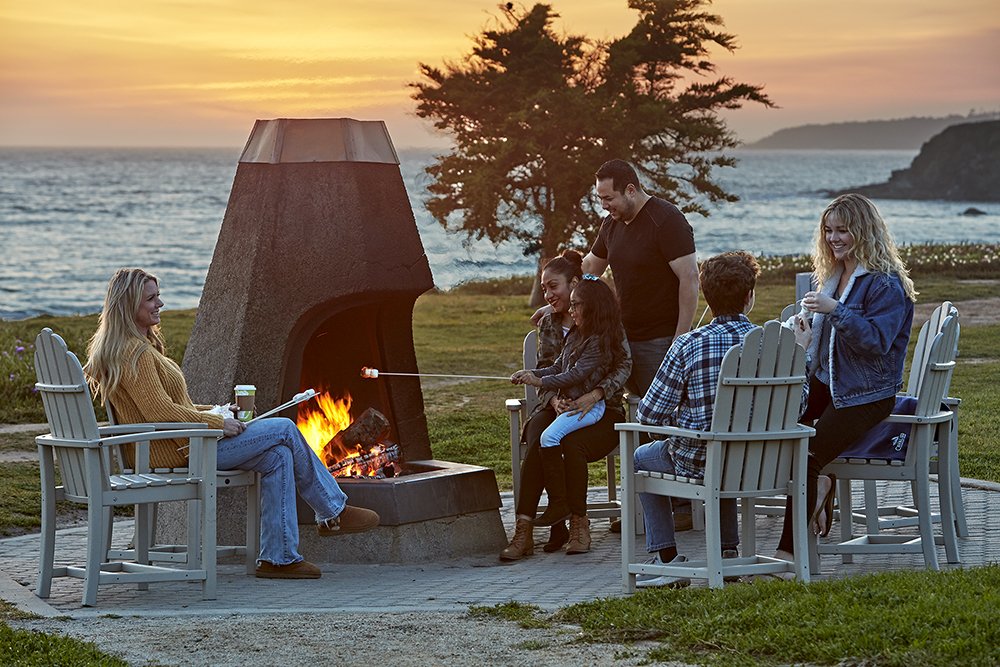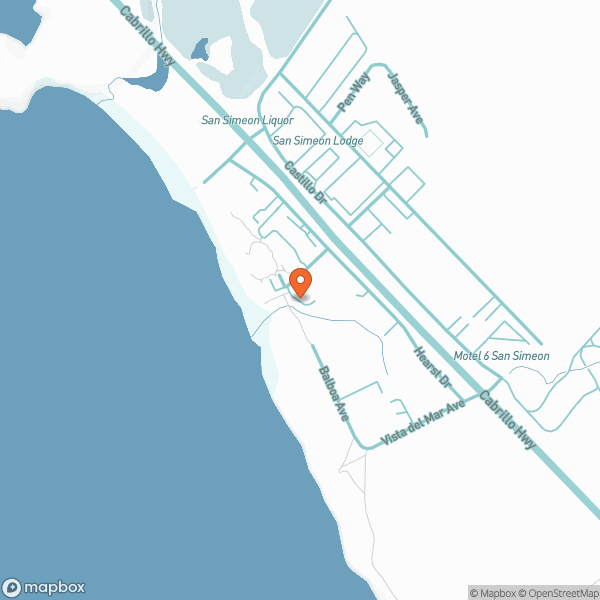Elephant Seals
Table of Contents
- Elephant Seals Overview
- History of the Elephant Seal Rookery
- Elephant Seal Viewing Area
- Parking on Highway 1
- Elephant Seal Viewing Seasons
- Piedras Blancas Friends of the Elephant Seal
- Elephant Seals & Stewardship Travel
- Elephant Seal Visitor Center
- Elephant Seal Facts & FAQ
- Wildlife Viewing Nearby
- Where to Stay
Elephant Seal Viewing
The Piedras Blancas Rookery is the only elephant seal rookery in the world that is easily accessible, free, and open to the public every day of the year. No reservations are needed. The rookery is located seven miles north of San Simeon on Highway 1.
History of the Elephant Seal Rookery
The Elephant Seal Rookery dates back to the 1700s when elephant seals and other marine mammals were hunted for their oil-rich blubber, then used to make oil for lamps and lubrication. The maritime fur trade of the Pacific Northwest nearly led to the extinction of local seals, sea lions, dolphins, whales and otters — by 1900, it was believed that the northern elephant was extinct. 20 years later, the seals received protected status in the United States and the population has slowly recovered in California.
Elephant Seal Viewing Area
The Elephant Seal viewing area is the best place to see the seals, with boardwalks and viewing platforms that extend both north and south of a large parking area. On-site volunteers and interpretive educational panels will guide you around the rookery.
Grab your binoculars and come see these magnificent marine mammals up close on one of the prettiest coastlines in California.
Viewing Guidelines
Be aware of your surroundings at all times. Elephant seals are not always easy to see. Their natural camouflage blends into sand and driftwood.
Stay at a distance. Use binoculars or a telephoto lens, or take photos from the pier. If a seal lifts his head to look at you, you have disturbed him and you are too close.
Keep your dog on a leash at all times. Elephant seals can bite with their large, sharp teeth. For your pet’s safety, do not ever allow your dog to approach a seal, regardless of how inactive the seal seems.
Keep your voice down. Elephant seals have ears and can hear you. Loud noises disturb them. Do not shout or call out to each other on the beach. If your dog is barking, please leave the beach.
Move slowly and minimize your body movements. Elephant seals have excellent eyesight and can see you.
Do not touch seals or throw objects into the water at seals. These actions disturb resting seals. The Marine Mammal Protection Act prohibits harassment of all marine mammals.
Leave your drone at home. This is a no-drone zone.
Consider the seal’s perspective. How would you feel being interrupted constantly while you lie on the beach? How would you respond to loud noises, barking dogs and movement all around you? How would you react to someone causing you harm? Please allow the seals to rest undisturbed.
Ensure a safe and pleasant viewing experience for everyone by following NOAA's marine wildlife viewing guidelines.
Parking on Highway 1
The Elephant Seal viewing area has plenty of parking. The dirt lot can accommodate vehicles of all sizes, including RV's and trucks. If you’re up for a small hike as part of your viewing experience, you can park at the Boucher Trail Head North and then hike the beginner-friendly Boucher Trail to the viewing area.
Viewing Seasons
Elephant Seals haul out on beaches near San Simeon year round, as they go through different phases in their life cycle. In peak times, there are up to 17,000 animals on the San Simeon shores. There are three peak times of the year that have large populations of seals - January, April, and October. Best times of year to see these amazing animals in action is fall and winter, with the big show (birthing and breeding) occurring December through March.
Males Arrive for Mating Rights
Starting in November, adult male elephant seals start to arrive on the shore. Adult males will stake claim to female pupping areas on the beach. When another adult male challenges a pupping location, a fight for dominance ensues. Adult males will fight for mating rights from December through January. Elephant seal bulls can reach 16 feet in length and weigh up to 5,000 pounds. Watching these enormous animals fight for dominance is quite a spectacle.
Birthing and Breeding Season
From December through March, female elephant seals arrive on the beach to give birth. Pregnant females begin to arrive in December with the majority of expecting mothers arriving in January. Births will typically occur a few days after arrival. Elephant seals pups are typically born at night and weigh about 60 pounds at birth and can weigh as much as 300 pounds at weaning. During the last week of nursing her pup (about 24 days), a female will mate with the alpha bull. Once she has mated, the female will typically go to sea and leave her pup behind. Pups are left alone to learn to swim and find food. Most pups are ready to depart for the sea in March and April.
Molting Season
Starting in April, females and juvenile elephant seals return to the shore to molt. The molting season lasts four to six weeks. Most females and juveniles are back in the water by the end of May. In June, subadult and adult males arrive to begin their molt. By August, the males have mostly completed with their molt. The shore has the least amount of animals in August. The majority of the animals seen in late summer are large adult males.
Fall Haul Out
From September through October, juvenile male and female seals arrive on the shore for the fall haul-out. This rest period is another peak of animals on the beach.
Friends of the Elephant Seal
The Friends of the Elephant Seal are available to answer questions at the viewing areas from 10am to 4pm daily. Look for the blue jackets to find a docent. Docents and the information they share will enrich your viewing experience. The viewing area and the docent station (Elephant Seal Vista Point) are located in the shadow of the historic Piedras Blancas Lighthouse. Follow your visit with a guided tour of the monument that has guided mariners along the coast since 1875.
Elephant Seals & Stewardship Travel
Stewardship Travel is your getaway to 'Ah-Ha' moments on vacation through activities and charitable donation opportunities that protect wildlife, habitat, and cultural heritage sites. Gain a deeper connection while on vacation with this amazing stewardship program.
This activity selection includes:
*A learning activity and/or outing
*A conservation/heritage donation opportunity through Friends of the Elephant Seal
Thank you for being a Stewardship Traveler along the Highway 1 Discovery Route.
Elephant Seal Visitor Center
The Friends of the Elephant Seal Visitor Center and Gift shop is located in the Cavalier Plaza, right next to the Chamber of Commerce at 250 San Simeon Avenue, Suite 5A. They're open every day from 10:00am-4:00pm. Stop in and check it out.

Elephant Seal Facts & FAQ
- How fast do elephant seals move? Don't be fooled by their name or their size — while elephant seals may lack stamina, they can move 6 mph in short bursts on land.
- How fast do elephant seals swim? Elephant seals are capable of traveling up to 10 mph in the water, although they typically slow it down to conserve energy.
- How long do elephant seals live for? The lifespan of elephants seals varies between males and females. On average, females live up to 19 years, while males may only live for around 13 years.
- Are elephant seals larger than walruses? Elephant seals are the largest of the seal species. When compared to walruses, elephant seals are much larger in size, averaging 3-6 feet longer thousands of pounds heavier.
- How long can elephant seals hold their breath? Elephant seals can hold their breath for longer than almost any other mammal, diving beneath the waves for up to two hours without surfacing for air.
- Do elephant seals have any natural predators? Orca whales and great white sharks are the primary predators of elephant seals.
- What do elephant seals eat? Elephant seals are primarily carnivorous. They will feed on mostly squid and fish, but their diet also includes small sharks, rays, shellfish, krill, and algae.
- Where do the seals go when they leave the rookery? The seals live a solitary lifestyle, spending 8-10 months of the year at sea. Most of this time is spent in deep water, searching for food. Their feeding areas can be as far as 3,000 miles, from Oregon to as far west as the Aleutian Islands.
Wildlife Viewing Nearby
- Zebras of Hearst Castle
- Whale Watching
- Bird Watching
- Otter Spotting
- Coastal Discovery Center
- See All — Wildlife Viewing

Where to Stay
- Ragged Point Inn (Ragged Point, North of San Simeon)
- Cavalier Oceanfront Resort (San Simeon)
- See All — Places to Stay


